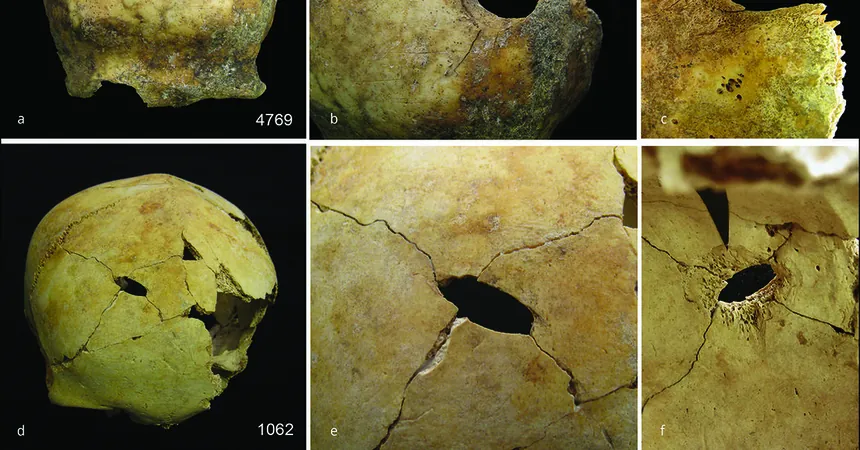
Unveiling the Horrors of the Past: Mass Grave Reveals Cannibalism in Bronze Age
2024-12-17
Author: Ming
Discovery Overview
A shocking archaeological discovery at Charterhouse Warren Farm in southwest England has revealed a brutal incident from the Bronze Age that defies historical understanding. Researchers have unearthed a mass grave containing thousands of bones scattered over a nearly 50-foot ditch. These remains, dated from over 3,000 years ago, exhibit signs of a grim fate: broken femurs, smashed skulls, and cut marks reminiscent of butchery.
Historical Context
Initially dismissed as a mere collection of bones from a Bronze Age gravesite discovered by cave explorers in 1970, recent studies have redefined our understanding of this chilling site. A groundbreaking study published in the journal Antiquity has concluded that these bones belonged to at least 37 individuals—men, women, and children—who suffered a tragic end involving slaughter and even cannibalism.
Expert Insights
“It’s taken us all aback. It was completely unexpected, totally atypical for the period and for almost all of British prehistory,” remarked Dr. Rick Schulting, an archaeology professor at Oxford University and lead researcher of the study.
Nature of the Discovery
What makes this discovery even more disturbing is the suggestion that rather than being armed, the victims were likely taken by surprise, either as captives or unsuspecting individuals caught in a sudden and violent attack. The evidence suggests this was not just an isolated instance of brutality but rather a mass casualty event where the deceased were dismembered and consumed during what seems to have been a ceremonial feast.
Analysis of Remains
The analysis of the remains presents a chilling narrative. One jawbone displays signs of having the tongue cut out, while numerous bones show evidence of flesh being meticulously sliced off. Smaller pieces that signify human hands and feet exhibited signs of gnawing, suggestive of consumption by omnivores, including humans themselves.
Implications of the Findings
Archaeologists are left contemplating the unsettling implications of the scale of this gruesome feast. The sheer number of human and animal remains implies that hundreds may have attended, transforming this mass killing into a symbolic event intended to convey a dire warning to neighboring communities.
Mystery Behind Motivation
The motivations behind such an extreme act remain shrouded in mystery. The Charterhouse Warren site does not resemble any known archaeological findings, leaving researchers puzzled as to the circumstances that led to this indiscriminate massacre. Dr. Schulting noted that despite its uniqueness, the event likely sparked a cycle of violence, inspiring revenge actions from the victim’s kin, although it’s improbable those remains would have been as carefully preserved.
Historical Interpretations
Some scholars suggest that this may have been a display of power by the perpetrators, aiming to instill fear and elevate their status among tribal rivals. The implications of these findings reach beyond the grave itself, hinting at a turbulent societal landscape during the Bronze Age where violence was not only common but celebrated in morbid forms.
Conclusion
In a world where the shadows of our ancestors continue to reveal themselves, the story of the Charterhouse Warren mass grave serves as a haunting reminder of humanity’s dark past—and raises the question: what other secrets lie buried, waiting for discovery? As the research continues, the psychological and cultural ramifications of such acts are increasingly significant, making us ponder the brutal history that has shaped human interactions through the ages.



 Brasil (PT)
Brasil (PT)
 Canada (EN)
Canada (EN)
 Chile (ES)
Chile (ES)
 España (ES)
España (ES)
 France (FR)
France (FR)
 Hong Kong (EN)
Hong Kong (EN)
 Italia (IT)
Italia (IT)
 日本 (JA)
日本 (JA)
 Magyarország (HU)
Magyarország (HU)
 Norge (NO)
Norge (NO)
 Polska (PL)
Polska (PL)
 Schweiz (DE)
Schweiz (DE)
 Singapore (EN)
Singapore (EN)
 Sverige (SV)
Sverige (SV)
 Suomi (FI)
Suomi (FI)
 Türkiye (TR)
Türkiye (TR)